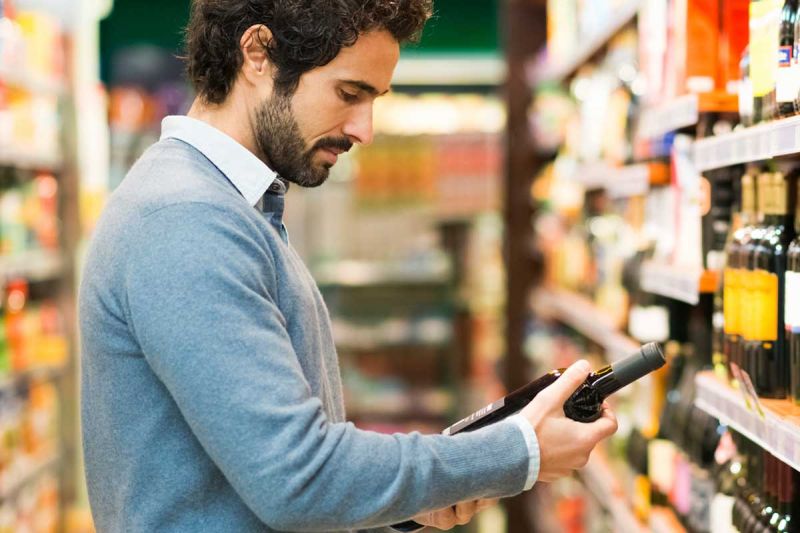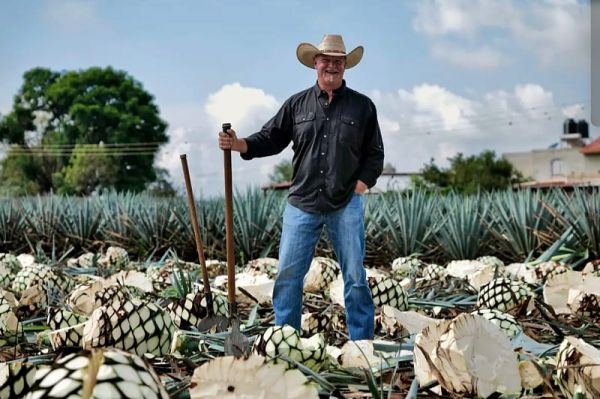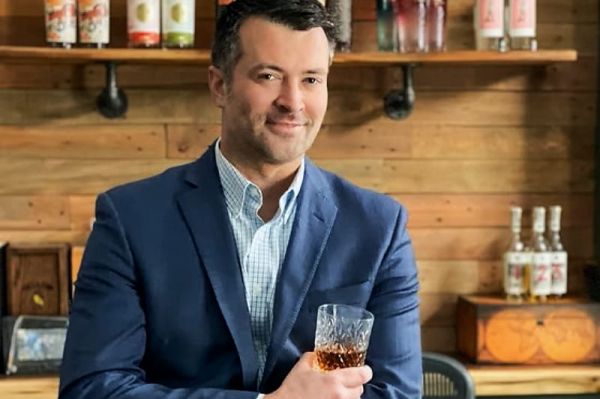Log in to your account
Lost password?Effective Merchandising Programs That Work in Retail
Retail Customers today have infinite memory, they can know everything with information available at their fingertips and are always connected. This changes everything.
06/02/2017

What this means for retailers is that expectations are not just changing, but growing. Companies need to listen to their customers and ensure that they supply what shoppers are asking for.
Furthermore, Rose Scott, GM Merchandising and Marketing, Woolworths Liquor Group, when presenting at the Australia Trade Tasting Conference, mentioned --
"It still actually comes back to the things that are really, really important to us as shoppers, those things have not changed: Time, money and angst"
1.Time: Quick purchases, online transactions
2.Money: The price and value of products
3.Angst: Long check-out line, too many choices
People care about being able to access items easily and making transactions quickly. Services provided must be intuitive and personal. They also rate the price and value of products highly. If they are faced with too many options in the store, angst increases and they do not enjoy their shopping experience.
As Lucie Greene, Director JWT Intelligence puts it aptly, “when we enter a physical store, we expect magic, experience and immersion.”
Although shoppers’ expectations have changed, the core of these demands are the same as always. Some new needs have also surfaced. Retailers today need to understand the specific needs of the shopper and know who they are. The path to purchase is more complex today than it has ever been in history. But even so, the essence of retail has not changed. And this is where the opportunity lies for the retailer to create a fabulous shopping experience.
Before the boom of fast speed internet, we still sought information about products but less information was available to us. We asked friends and family, and checked different stores. We always gathered information about products. Now the same activity is done through an extended social network online.
A transaction was involved before and so it is today. Now the consumer has more power with easily accessible prices, product reviews and a wealth of knowledge about not only products but companies. There are so many options available to the consumer in the retail stratosphere, they can research a product online and buy it in a store, or be standing in a store and compare prices to an online store, or even check ratings while there, they could cross-compare reviews through social media and all of this is happening around us, right now. Shoppers today rely on feedback, research and multi-channel content and opinion testing before committing to a purchase.
The third factor in retail is about delivery and fulfillment. The customer of today is demanding more from retailers – it has to be on their terms.
Retailers must learn to understand shoppers better: Know what the consumers' expectations are on every purchase.
The challenge for retailers is that shoppers’ expectations change constantly, which means retailers need to be alert to how to best deliver to customers. It is important that they are adaptable and learn the needs of different groups and people.
Trends affecting the marketplace today:
These recent global mega-trends have affected what, why and how consumers drink. Understanding and leveraging these trends are relevant for retailers to meet today’s customers' needs.
1.Digital life – Consumers are spending more and more time online. The major shift here is that most of this digital time is spent on mobile phones. So, if retailers are not listing products online in a mobile friendly format or through an app, they are missing out on sales opportunities.
2.Time scarcity & convenience – People are willing to pay for convenience and to save time. This involves services like pre-order and pick-up, drive-thru and online shipping and deliveries. If retailers see these as an inconvenience rather than the norm, they will lose out on potential sales.
3.Personalization – When shoppers walk in a store or browse online, they expect the store owner or platform to know what they are after. The experience should be tailored to them. If this requirement is not met, many a time a shopper will leave the store and may not return due to an unsatisfactory shopping experience.
4.Social Responsibility – People have greater social awareness and are increasingly socially responsible. And, they will associate better with retailers that follow a similar philosophy.
5.Health and well-being – This has gained prominence in peoples’ lives and is affecting the consumption of alcohol as well.
6.Disappearing middle class – There is an increase in families and individual within the higher income bracket and also the lower middle class. This means that some are willing to spend money on higher-priced alcohol products and others on entry-level wines. Retailers must be able to cater for both.
A change in demographics, like an aging population and migration, can lead to changes in shopping behavior and consumption. Families are getting smaller and children are leaving the household much later than they previously did. This directly affects the alcohol consumption patterns within a home.
In some markets, people are moving from full-strength beer to mid-strength beer. Wine is an important part of this dynamic as the population ages and preferences change. Alcohol consumption in Australia is declining: It went down from 11.5L to 9.5L.
This is due to trends like health and well-being and balance in life as well as changes in demographics. It is therefore imperative for retailers to make products and experiences personal and relevant for their customers. A need for products that are vibrant and healthy arises from this shift in behavior.
A person who cares about social responsibility will be more likely to be loyal to your company if they feel they can trust you. On the other hand, a person who rates their health and well-being highly, will be interested in products deemed healthier. Here personalization is key; let consumers know about products according to their values and what matters to them.
Understanding occasions:
The decline in alcohol consumption in Australia translates to 4-5 million baskets lost in a year. From another perspective, retailers just lost out on a whole week out of 52 weeks of the year. Although there has been a 1% value growth within the industry, once tax is considered, it is insufficient and of no real value.
How can retailers make customers more prone to go shopping and increase their purchases?
Rose Scott believes that by knowing what consumers purchase alcohol for, retailers can tailor their experiences and products accordingly.
There are four occasions that consumers buy alcohol for, and these differ from on-premise consumption:
1.Home drinking – when one is drinking alcohol with a regular meal, when they are spending time at home with their own family, close friends and relatives or people that they live with.
2.Events – These include days like Father’s Day, Valentine’s Day, Thanksgiving or Christmas, that prompt wine purchases.
3.Socializing - This would be a social event at your place where you invite people over, maybe for a barbeque or a small party or if you are visiting someone else’s house or a BYOB restaurant.
4.Gifts – Alcohol is often purchased as gifts for birthdays or other special occasions.
Statistics and how these translate to consumer behavior:
This leads us to understand the statistics behind how frequently consumers shop:
1. 15% Shoppers at least once a Fortnight
2. 50% Shoppers at least once a Month
3. 35% Shoppers Quarterly or less often
Most shoppers frequent a supermarket twice a week but they purchase liquor only once a month in their supermarket run. If the shoppers that visit a liquor store quarterly increased their frequency to even one more time a year, it would present a big opportunity for retail stores.
In trying to understand consumer behavior better
Liquor shoppers like to shop around: 9 out of 10 regular shoppers 2 or more banners. This means that shoppers purchase for convenience. Rather than sticking to a preferred store, they will frequent a store that is near their home or workplace or on the way home or to where they are going.
What this means for retailers is that they have to make an effort to grab the attention of the buyer. They should attempt to become the customer’s “preferred store”. This can be achieved if consumers have a liking for the products you offer, and that something different that makes them want to come to your store rather than someone else’s.
Let’s look into what consumers are actually drinking. Categories here include beer, cider, glass spirits, ready to drink mixes and wine.
40% shop 3+ categories out of 5 in a year
30% shop 2+ categories out of 5 in a year
30% shop 1 category out of 5 in a year
Deciphering these figures tells us that shoppers are creatures of habit. They will buy the type of alcohol that they are most comfortable consuming and do not venture far from that. As we can see from these sobering statistics, customers today are not comfortable veering away from the known path and are less likely to try something different. It indicates that consumers of alcoholic beverages are stuck in their choices and are not confident to give the unknown a try. Retailers can change that by having knowledgeable sales staff who are able to share the richness of stories behind products and offer opportunities of trial to encourage shoppers to make a safe discovery and try something new. Retailers can inspire consumers and give them that confidence to expand their palate and enhance their shopping experience.
On any single shopping trip 81% shoppers buy from only category.
What this means is that buying alcohol differs greatly from supermarket shopping where products are picked up across the board and the basket is piled up. Liquor is being consumed for a reason, for a specific occasion which is why shoppers are usually ever purchasing only one category of product in one shopping trip.
For producers who think of creating products in different categories to increase sales and present a variety of options to the consumer, these statistics speak otherwise. Even if your line offering includes a beer, wine and spirit, the customer will only ever pick up one of these during one shopping excursion and not load their basket with more as per your expectations.
When we examine shopper behavior between two major occasions: Christmas and New Year’s Eve, we find that behavioral patterns between the two are vastly different. 74% of consumers start planning for Christmas at least a month in advance and begin shopping around that time. NYE on the other hand has customers plan less than a week in advance with many purchasing alcoholic beverages on the same day. Retailers in preparedness therefore must make a quick shift between these two occasions on which different type of alcohol is purchased and consumed and in large volumes.
How can retailers ensure loyalty and make more sales?
Rose Scott mentions here that loyalty is not really a strategy but an outcome. This is key for retailers to understand and deliver. It’s an outcome of doing the right things for your customer and as a result, the customer gives you their trust. This is ultimately what translates into loyalty.
Essentially, a retailer is an agent that provides a customer with products that they need when they need them. They must take products in the marketplace with their brand stories and deliver them to customers with an underlying element of trust and transparency. Retailers need to do things better than anyone else. As expectations change constantly, the retailer need to tune into these changes at all times. To be one step ahead is vital.
In addition, retailers need to be excellent at delivering at least one if not more of these factors-
1.Convenience – not just about time.
2.Loyalty – doing the right thing by the customer.
3.Experience – emotional resonance with the shopper.
4.Value – sharing the value with the shopper.
It starts with getting the basics right. Availability of product is the essence of this. When a customer comes in to buy and the product that a customer is looking for is absent from the shelf, it breaks the value proposition of time and convenience and leaves them disappointed.
Customer Service is an underlying function that a retailer cannot falter on. Ease of shopping and making a shopping experience relevant to a customer are other tenets to deliver on, whether it is a liquor store attached to a supermarket or a destination store that a customer drives to. The customer needs to feel that they are getting a good value on purchased products. Customers are now acutely aware of the exact pricing of products and need to know that they are getting the product at the right value proposition. This is key to establish trust with the customer.
Value equation for a customer is about price, service and quality. When a customer feels like they are making a smart decision, they will be satisfied and therefore more loyal. Some technology, like apps, provides this by being tailored exactly to a customer’s profile and at the same keeping the customer in the retailer’s cosmos. This is where customers want retailers to go and it is of utmost importance for the industry to provide this.
Furthermore, it is imperative to know your specific customer groups: tailor your products to the local people who come to your store. What is their age bracket? What values do they have? What products are they most likely to drink?
When a retailer knows their customer group they can ensure loyalty by doing the right thing and providing a service that is personalized. They can fine tune exclusives, such as events and products only available in the store. In addition, rewards need to be relevant to the customer for them to stay loyal.
Even online retailers have realized that well-planned and tailored experiences in physical stores create a buzz and excitement for customers. This has led to many opening their own brick and mortar stores.
What can be done within the industry to improve market value?
Products can be provided in a more bespoke fashion by partnering with suppliers. Retailers and suppliers need to differentiate brands that service customers in different ways. Companies must build brand loyalty and drive up sales to get returns for shareholders.
In closing, Rose Scott stresses that there are three points that retailers need to focus on right now in order to grow their market share:
1.Increase frequency of visits and purchases
2.Provide personalized, relevant and exciting experiences
3.Provide value
She mentions a quote by The Future Shopper Kantar Retail in summary, “shopping across all retail platforms is going to be faster; it’s going to be more aimed at personal preferences; it’s going to be more fun where it makes sense; and the value proposition is going to be more personal, more targeted and more private.”
What this means for retailers is that expectations are not just changing, but growing. Companies need to listen to their customers and ensure that they supply what shoppers are asking for.
Furthermore, Rose Scott, GM Merchandising and Marketing, Woolworths Liquor Group, when presenting at the Australia Trade Tasting Conference, mentioned --
"It still actually comes back to the things that are really, really important to us as shoppers, those things have not changed: Time, money and angst"











